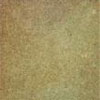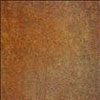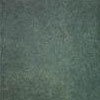Concrete Polishing / How it Works
Concrete polishing installed by TJB Industries is functional, economical and dust free on both old and new concrete surfaces. Treated surfaces resist damage from water and surface abrasion and help reduce overall maintenance costs. Concrete Polished floors also maintains the natural slip resistance of concrete floors.
Concrete polishing is a process of diamond grinding the concrete surface then applying a premium hardener, densifier and sealer to change the molecular structure of the concrete wear zone. The hardener system reacts with the concrete to produce insoluble calcium silicate hydrate within the concrete pores. The increased surface hardness reduces dusting and simplifies maintenance producing a cleaner, healthier environment. Once the concrete polishing system has been installed there are no peeling, chipping, and flaking issues.
Available Color Options













Concrete Polishing / Benefits
There are many benefits from concrete polishing and it can be modified in many ways to reflect your particular taste. Since its a dry process it allows our customers access to areas on the floor as we are working. HEPA vacuums eliminate most airborne dust particles which allows us to work while you continue to operate. Concrete polishing is highly cost competitive compared to alternative flooring systems such as epoxy flooring and many more. It is also a natural green product, and is installed using an earth friendly green process.
Why Go Green / benefits
Concrete polishing is a true green alternative flooring system. Its possibly the greenest flooring system available. Green is not only good for the environment but it’s good for your pockets as well. Polished concrete reduces material costs, short and long term costs, and also improves energy efficiency.
Reduces Material Costs
Polished concrete uses the existing concrete slab as the base for an aesthetically pleasing, long lasting floor system. The polishing process removes a minimal amount of surface material and puts no harmful contaminants into the air. Polishing requires no extra construction materials and effectively reduces the project’s environmental impact.
This simple and effective process eliminates the need to produce, transport, install, maintain, and eventually replace traditional floor systems. Traditional floor coverings such as paints, coatings, tile, VCT tile, hardwood and carpet all have a limited life cycle. They need to be removed and replaced, repeating the original cycle of production, transportation, installation and maintenance. Ultimately the removed materials end up in landfills posing future environmental hazards.
Reduces Short Term and Long Term Costs
The concrete polish process eliminates the costs of producing, shipping, installing and maintaining traditional floor systems. Even eco-friendly and recycled floor products don’t solve these issues.
The hardened and densified nature of polished concrete makes floor maintenance faster, easier and less expensive. It requires no sealers or waxes. These sealers and waxes need to be periodically stripped and re-applied. Polished floors can be installed in shorter time frames and being a dry process allows other contractors to keep working, thereby speeding the time it takes to complete the overall project.
Traditional floor systems have a limited life cycle and need to be removed and replaced. Often the cost to remove and replace exceeds the initial cost of installation. Polished concrete requires only a periodic re-polish or “buff” every 5-8 years to maintain its original shine. This re-polish is done in a fraction of the time and at a fraction of the cost.
Improves Energy Efficiency
The concrete polish process allows the customer to specify desired reflective levels from matte to highly reflective “mirror like” surfaces. Highly reflective floors increase overall light levels by reflecting upwards the light from ceiling fixtures. Estimates for improved light levels can reach 20% and help reduce the number of light fixtures used in construction, thereby reducing both initial investments and long-term energy costs.
Reduces VOC’s (Volatile Organic Chemicals) and Other Airborne Contaminants
A large percentage of the population has sensitivities to airborne contaminants and VOC’s (Volatile Organic Chemicals). They create odors and affect indoor air quality. The polishing process uses optional water soluble sealers with low VOC levels. Polishing also uses highly efficient HEPA vacuums to remove 98% of the airborne particles generated during the polish process.
Traditional floor systems are heavily dependent on hazardous chemicals, adhesives, strippers, and other chemicals used in the manufacturing and installation of carpets, tiles, coatings, and other flooring. Polishing eliminates the need to use any other these potential harmful substances.
To learn more about the United States Green Building Council and its LEED rating system visit their website: www.usgbc.org
